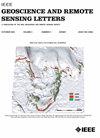遥感影像道路提取的语义-几何框架
IF 4
3区 地球科学
Q2 ENGINEERING, ELECTRICAL & ELECTRONIC
引用次数: 8
摘要
从高分辨率遥感影像中提取道路信息对自动驾驶和道路规划具有重要意义。与大规模物体相比,道路更小、更蜿蜒,而且很可能被建筑物的阴影覆盖,这导致深度卷积神经网络(DCNNs)难以识别道路。该信函提出了一个具有两分支主干的语义-几何框架(SGNet),即语义主导型分支和几何主导型分支。语义优势分支输入图像预测密集语义特征,几何优势分支获取图像生成稀疏边界特征。然后,自适应融合两个分支生成的密集语义特征和边界细节;进一步,利用邻域像素之间的亲和力,提出了特征细化模块(FRM)来细化纹理和道路细节。我们在渥太华道路数据集上评估了SGNet。实验表明,SGNet在道路提取任务上优于其他竞争对手。代码可在https://github.com/qiuluyi/SGNet上获得。本文章由计算机程序翻译,如有差异,请以英文原文为准。
A Semantics-Geometry Framework for Road Extraction From Remote Sensing Images
Road extraction from remote sensing (RS) images in very high resolution is important for autonomous driving and road planning. Compared with large-scale objects, roads are smaller, winding, and likely to be covered by buildings’ shadows, causing deep convolutional neural networks (DCNNs) to be difficult to identify roads. The letter proposes a semantics-geometry framework (SGNet) with a two-branch backbone, i.e., semantics-dominant branch and geometry-dominant branch. The semantics-dominant branch inputs images to predict dense semantic features, and the geometry-dominant branch takes images to generate sparse boundary features. Then, dense semantic features and boundary details generated by two branches are adaptively fused. Further, by utilizing affinity between neighborhood pixels, a feature refinement module (FRM) is proposed to refine textures and road details. We evaluate the SGNet on the Ottawa road dataset. Experiments show that the SGNet outperforms other competitors on the road extraction task. Codes is available at https://github.com/qiuluyi/SGNet.
求助全文
通过发布文献求助,成功后即可免费获取论文全文。
去求助
来源期刊

IEEE Geoscience and Remote Sensing Letters
工程技术-地球化学与地球物理
CiteScore
7.60
自引率
12.50%
发文量
1113
审稿时长
3.4 months
期刊介绍:
IEEE Geoscience and Remote Sensing Letters (GRSL) is a monthly publication for short papers (maximum length 5 pages) addressing new ideas and formative concepts in remote sensing as well as important new and timely results and concepts. Papers should relate to the theory, concepts and techniques of science and engineering as applied to sensing the earth, oceans, atmosphere, and space, and the processing, interpretation, and dissemination of this information. The technical content of papers must be both new and significant. Experimental data must be complete and include sufficient description of experimental apparatus, methods, and relevant experimental conditions. GRSL encourages the incorporation of "extended objects" or "multimedia" such as animations to enhance the shorter papers.
 求助内容:
求助内容: 应助结果提醒方式:
应助结果提醒方式:


